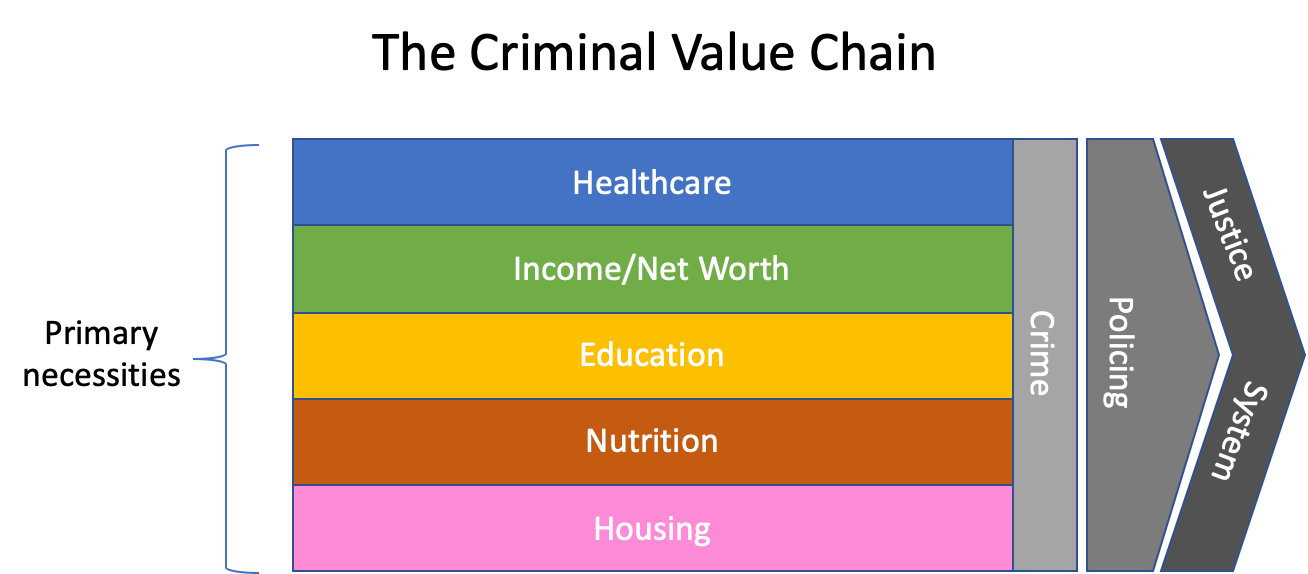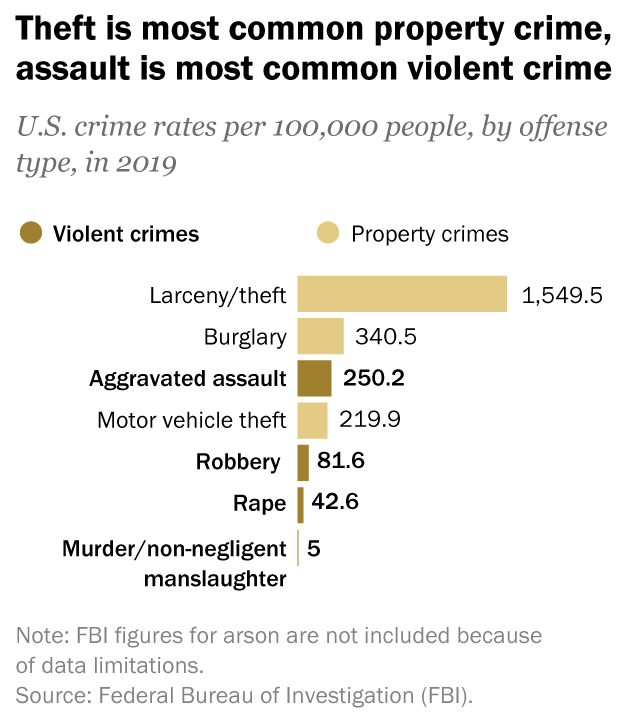Yves here. Even when it was a hot meme, “Defund the police” was obviously not likely to go anywhere. It vagueness allowed for opponents to define what it meant. But even worse, some advocates were calling for the extreme measure of eliminating police funding. The problem with that stance is that even with their many problems, police also do useful things like intercede in domestic violence cases and arrest drunk drivers. Many members of the public want cops around to reduce the level of criminal activity.
Halst below suggests addressing poverty as a first line measure for reducing crime. Perhaps I missed it, but if anyone on the political soi disant left suggested that as an alternative to defund the police, it was not amplified. Let’s go back to the first high profile case of black murder by cop, Eric Garner. Why was he arrested in the first place? For allegedly again selling single cigarettes outside New York City’s strict cigarette tax regime (he was out on bail on that charge). Even if true (Garner denied at the time of his fatal arrest that he was selling cigarettes), do you think vending single cigarettes would even be an activity on a scale that would get police attention in the absence of significant poverty?
By Jared Holst, the author at Brands Mean a Lot, a weekly commentary on the ways branding impacts our lives. Each week, he explores contradictions within the way politics, products, and pop-culture are branded for us, offering insight on what’s really being said. You can follow Jared on Twitter @jarholst. Originally published at Brands Mean a Lot
What’re your favorite chains? Restaurant chains? Chain Smoking? Chains of command? Mine are value chains, which will be today’s topic (my actual favorite chain is Taco Bell).
A common misconception in politics is that successful business leaders will be successful politicians. The core assumption being that the skills required to successfully oversee a large business and make a profit map nicely to running the vast bureaucracies and budgets of various levels of our government. This line of thinking has wrought us several business-politicians (these are just the ones which come top of mind): Mitt Romney, Michael Bloomberg, John Hickenlooper, Donald Trump, Mark Warner, and of course our beloved Ross Perot. (If you’re reading this and aren’t old enough to remember Ross Perot, please forward this newsletter to your friends because I would love to get Brands Mean a Lot into the hands of your hip and young generational cohort).
As business leaders, these people are assumed to understand the economy, which depending on who you ask and how you ask it can mean many different things. Even when politicians were just lawyers, community organizers, teachers, or policy wonks in their previous lives, it’s expected they’ll understand and improve the economy and run aspects of government–if not all of government–like a business. How often are we reminded that the Post Office loses money, or that the national debt is too high, or that the deficit is too great? Nevermind that it’s not necessary to have a profitable Post Office, it’s okay to have national debt (it sure helps that the dollar is the world’s reserve currency), and the deficit doesn’t need to be eliminated. The goal, like a business, is to have excess money (profit) when it comes time to report the numbers.
Given the business ethos by which many look at governing, it’s surprising more profit-maximizing frameworks aren’t used as frames of reference for improving crucial issues. One such popular framework used to harness profit is the ‘value chain’–the sequence of steps a business undergoes in the process of producing a final product.
A standard business value chain. Source: Michael Porter and Harvard Business School.
Decades-long calls for police reform have been turned even louder after the recent murder of Tyre Nichols at the hands of Memphis police officers, and President Biden chose to address those calls in his February 7th State of the Union speech. Although the value chain framework can map nicely to many of today’s issues; I found it maps particularly well to how we can change our thinking about policing. While using business as a proxy for government is misguided, we’d be better served if rather than an entity unto itself, policing were treated as an interdependent part of a criminal value chain.
In the speech, Biden shares recent police reforms which, with the help of Congress, have been recently implemented. These reforms treat policing as an independent entity, which rather than solve the issue of police violence, only fix it at the margins.
In fairness to Biden, he does at least acknowledge the need for police reform:
Let’s come together and finish the job on police reform.
He even goes on to propose some decent solutions!
More resources to reduce violent crime and gun crime; more community intervention programs; more investments in housing, education, and job training.
But then, he gets to the solutions which our government’s actually put into place:
I signed an executive order for all federal officers banning chokeholds, restricting no-knock warrants, and other key elements of the George Floyd Act.
Banning chokeholds, restricting no-knock warrants, implementing body cams, and use of force reporting imply that policing, and the tactics it employs, exist outside of crime. Rather, these tactics are the final part of the crime value chain, which began many steps earlier.

Source: Me! I did this!
In the framework I’m proposing, these basic needs have taken the place of ‘support’ and ‘primary’ activities in a traditional value chain. Nonetheless, the idea remains the same: each contributes, in some vague chronological order, to the final product: crime.
The argument I’m making for this framework is contingent on understanding that a very large proportion of the crimes committed in the US could be prevented with a more equitable distribution of money, nutrition, property, housing, education, and healthcare. If necessities aren’t being met, then crime becomes more appealing. Not to mention, when necessities aren’t being met, stress goes up, which can lead to an increase in situational violence. While causation between crime and poverty isn’t perfect, there’s enough correlation to assume that reducing poverty would go a long way towards reducing crime. A 2018 study entitled “Work and opportunity before and after incarceration” from the Brookings Institute found that:
Three years prior to incarceration, only 49 percent of prime-age men are employed, and, when employed, their median earnings were only $6,250. Only 13 percent earned more than $15,000.
Meaning, most prime-age men who commit crimes earn less than $15,000 a year. There are other studies and reports documenting similar connections, but I found the fact above to be the most concise and illustrative.
What’s more is that the majority of crimes committed in the U.S. are property crimes. ‘Property crimes’ is essentially a euphemism for various types of theft including vanilla theft (duh), burglary (theft but with violence), and motor vehicle theft (theft but specifically having to do with motorized vehicles).

Source: Pew Research
Again, correlation and causation, etc, but the fact that the vast majority of crimes committed are people taking things from other people implies most of these people’s needs aren’t being met.
Alternatively, I guess you could believe vast amounts of people are pathologically inclined to steal and coincidentally those same people, on the whole, have very little of the aforementioned necessities. That seems weird to me but I guess we’re all just shoppers in the marketplace of ideas.
The traditional value chain, along with my own, ultimately strive for the same thing–better outcomes. Like most frameworks, these are general to the point of being useless until applied. Treating the government like a business may not be the best way to measure successful governance, but that doesn’t mean we can’t find some useful tidbits from dusty MBA textbooks.
Sound off about your favorite chain in the comments.



